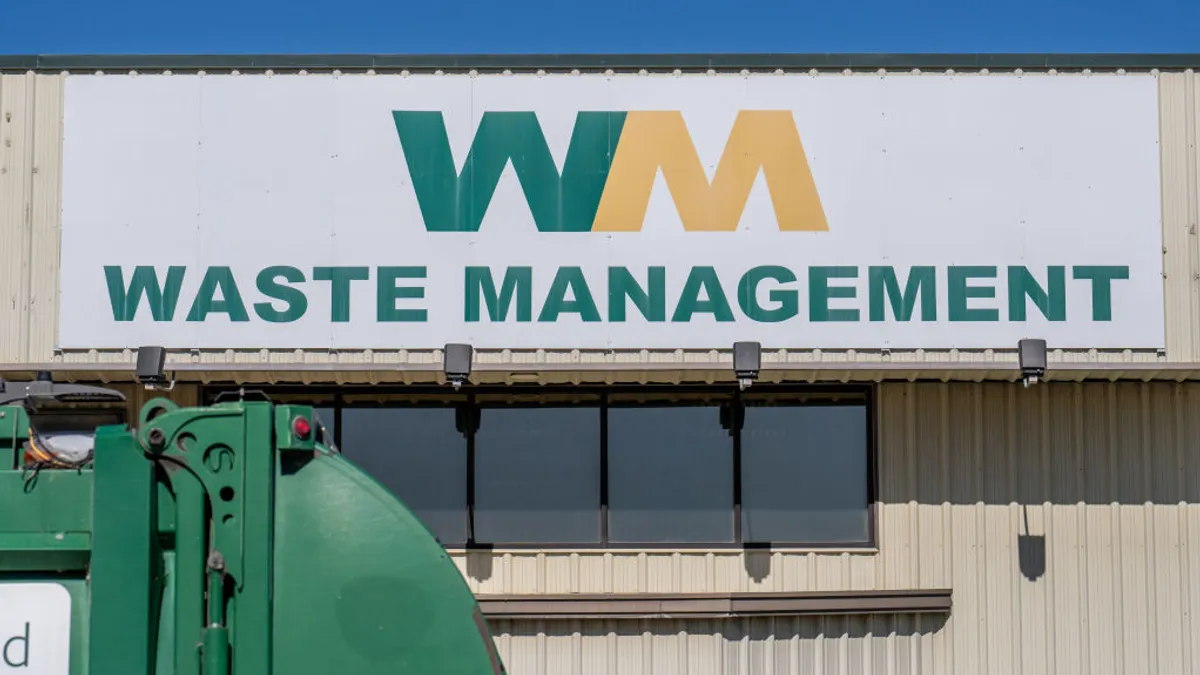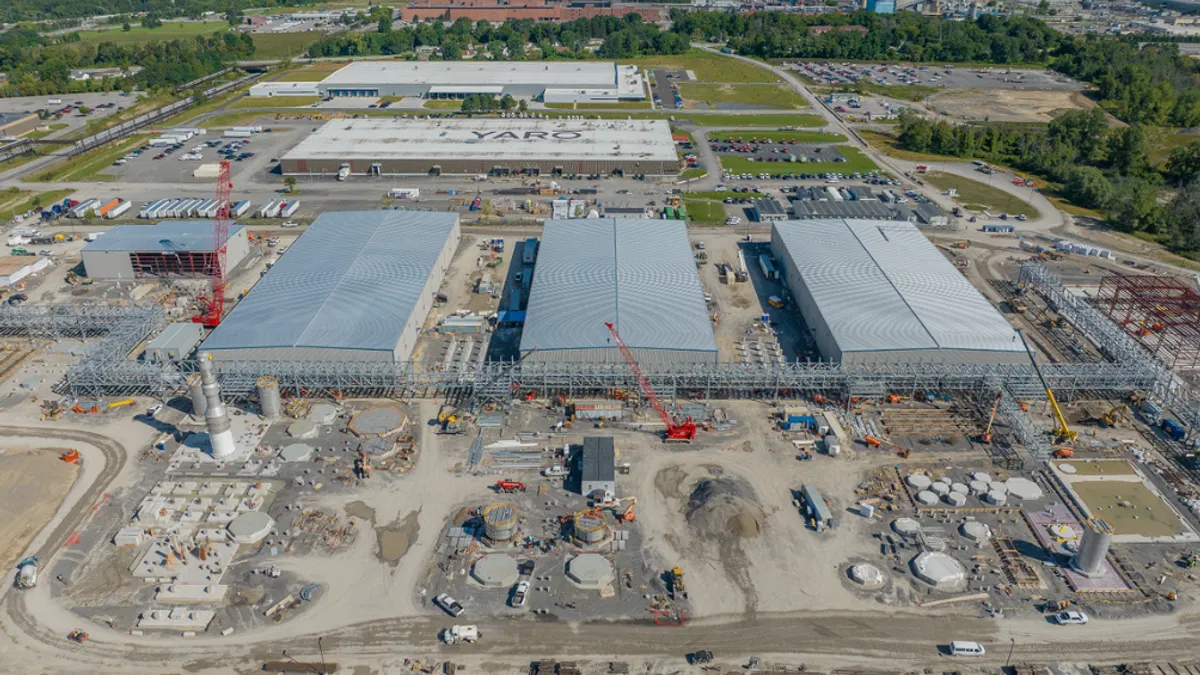The recent announcement that California’s largest operator of beverage container redemption centers was immediately shutting down all locations has left many wondering what happens next with recycling in the state.
Earlier this month, rePlanet suddenly closed all 284 of its recycling centers and terminated 750 employees. In a statement, the company named reduced payments from the state, depressed pricing for scrap aluminum and PET plastic, and higher operating costs due to labor changes as contributing factors.
This came after rePlanet had already closed 191 recycling centers in January 2016. Until this month, the ones that remained made up about 19% of all California beverage container recycling centers. Now, that total stands at 1,225, according to the California Department of Resources Recycling and Recovery (CalRecycle).
Many recycling advocates believe California's redemption program is so inherently broken it drove rePlanet and others out of business. CalRecycle says it has taken action to aid recyclers, but supporters are calling on both the agency and state legislators to do more to prevent a possible system-wide collapse.
"We have quite the emergency crisis here," Susan Collins, president of the Container Recycling Institute (CRI), told Waste Dive.
How they got here
California’s Beverage Container Recycling Program, or bottle bill, passed in 1986 and took effect in 1987. Consumers can return their bottles and cans to participating recycling centers and receive California Redemption Value (CRV) – a nickel or dime, depending on the size – for each qualifying item. The CRV for bottles recycled through curbside collection is redeemed by haulers and taken into consideration during contract negotiations with municipalities.
CalRecycle oversees the program, which has resulted in more than 300 billion containers being recycled since it began. The state’s beverage container recycling rate has increased from 53% at the inception to a high of 85% in 2013 as a result. It has dipped below 80% in the years since, with many blaming recycling center closures.
California's bottle bill also established "convenience zones" to ensure consumers can access the privately owned and operated recycling centers throughout the state. When a recycling center closes, nearby supermarkets are supposed to provide in-store bottle redemption or pay a $100 per day fee to waive their responsibilities.
A recycling center closure triggers a 90-day process to return a convenience zone to "served" status, during which time CalRecycle determines if other recycling centers already exist in the zone. If not, all beverage retailers in the zone receive notice they must begin redeeming containers or pay to opt out. That's the process retailers affected by the rePlanet closure are in right now, according to CalRecycle spokesperson Lance Klug.
Despite this longstanding framework, changes in packaging composition and market values have affected CRV recyclers in recent years.
Aluminum has traditionally carried the program since its inception and was once the most prominent type of container collected. Lately, both the material's value and quantity are taking hits. Plastic has become more predominant, but it's worth less than aluminum due to factors including lower oil prices that make virgin products more desirable for some manufacturers.
"Even aluminum, which still retains value, is worth about 40% less than it was three years ago," Klug said.
Product lightweighting over the past couple decades has led to thinner aluminum sheet used in manufacturing, and the average aluminum can weighs 40% less than it did in 1972. As a result, recyclers must collect more individual items to achieve the same scrap weight as in the past.
Plus, earlier this year Arconic Inc. (formerly Alcoa Inc.) transitioned its Knoxville, Tenn. can aluminum sheet production facility to automotive and industrial sheet. This mirrored recent moves by other aluminum production companies such as Novelis.
"[Arconic] had been taking 14% of the aluminum cans that were recycled in the U.S. When they stopped taking that, it threw the supply and demand relationship out of whack [and] aluminum can prices dropped pretty much overnight," CRI's Collins said. "The average redemption center is getting $3,000 a month less revenue ... just due to this one thing."
These changes, combined with the recycling industry's broader economic challenges, have led to more recycling centers closing in recent years – beyond just rePlanet locations.
State (in)action
Amid these stresses, California's state officials have been pressured to find a solution. The politics remain complex and clear progress has been hard to find in recent years.
Last year, the state legislature passed SB 452 as a short-term bottle law fix. It included elements such as increasing recycling center subsidies and allocating $3 million in surplus funds to create recycling opportunities in underserved areas.
Then-Gov. Jerry Brown vetoed the bill, saying in a letter it was inconsistent with the administration's program modernization principles, and he wouldn't approve legislation that didn't include "fiscal sustainability, improved collection and incentives for innovative recycling."
Protect CRV, a trade association formed in 2018 by rePlanet and others, supported the bill. Still, Executive Director Jenna Abbott agreed with Brown at the time that the bill fell short of addressing certain necessary aspects.
According to Jamie Court, president of Consumer Watchdog, the veto wasn't entirely surprising considering "the measure was garbage and not a full fix."
Consumer Watchdog and Protect CRV are among the groups that say recycling center closures not only hurt the recycling industry, but also consumers. Plus, Consumer Watchdog says the broken system means consumers only are getting half of their deposit money back.
“Many people need those nickels and dimes back – people on fixed incomes like senior citizens, single parents [and] people on the edges of society,” Abbott told Waste Dive. “And it’s more environmentally conscious to redeem [bottles] that way because it provides the cleanest stream of material that’s most likely to be recycled … With curbside, the container may or may not be recycled, depending on contamination.”
Bottles collected through redemption programs are considered orders of magnitude cleaner than those collected curbside, thus the two streams typically don't go through the same processing facilities. That makes it a non-viable option to simply encourage the public to put their bottles in curbside bins to keep recovery rates up amid the wave of recycling center closures. For example, according to Collins, the facilities currently accepting PET from the CRV program would be overwhelmed with contamination if they suddenly shifted to curbside material.
As stakeholders look for a more lasting fix, CalRecycle and the state legislature have become popular targets. Protect CRV said it and other groups have long warned about the program's issues, and they say rePlanet's closure shouldn't have happened.
"They should have known, based on their reports and looking at subsidies they've provided and how much they’ve fallen … [that] they were squeezing the industry to the point of extinction," Abbott said.
Legislators did introduce a new version of the vetoed bill this year, SB 724, but it has since stalled and California's legislative session wraps next month.
"We've heard a lot of talk. There's been legislation to try to prop up California’s lagging redemption centers … and every single time it has been quashed," said Abbott. "I think it's time for us to take a look at why that's happening."
Next steps
As the finger pointing continues, CalRecycle is pushing back on the fresh wave of scrutiny from outside groups.
"CalRecycle has taken action and we're going to continue to work with the legislature and other stakeholders to go from here," Klug said.
The agency reports already receiving numerous inquiries from other operators potentially interested in opening new recycling centers at former rePlanet locations. It also claims to have stepped up enforcement of beverage container retailers and conducting more random inspections. Still, critics say the increased enforcement might not be strong enough to force retailers into compliance.
Across the board, recycling advocacy groups want to see more action.
Consumer Watchdog is among those calling for a leadership change at CalRecycle and increased grocery retail enforcement. Upper Room Consulting President Leonard Lang, a longtime fixture in the CRV sector, joins those who desire structural changes to the two subsidies recycling centers receive. He views them as inadequate overall and particularly bloated for select centers.
Two of CRI's suggestions include expanding the types of containers collected to include wine and spirits and raising the deposit on existing containers. Protect CRV shares those ideas and additionally requests that CalRecycle and state legislators infuse at least $10 million of surplus funds to support existing recycling centers, encourage start-up growth and compel beverage manufacturers to bear their share of the cost of the containers.
CalRecycle's Klug cited packaging reform efforts taking place within the state, including a push to require recycled content in products, as a way to increase demand. Recycling advocates say that's a good start, but they believe passing recycled content legislation without reforming the bottle bill will cause further trouble.
"We can't have a system where we're taking the material away... and at the same time require the beverage companies to use that material," CRI's Collins said. "They wouldn't have the supply they need."
In the meantime, the CRV program does allow for two different recycling center subsidies. CalRecycle has used emergency regulation to adjust one subsidy to yield a 16% profit margin for rural centers and 11% margin for urban centers. The agency has faced criticism for not raising the subsidies more, but it says the amounts are defined by defined by statute. Some disagree.
"CalRecycle has it completely in its power to pay the redemption centers more money right now via emergency regulation," said Consumer Watchdog's Court. "They’ve done it in the past. All they have to do is raise the rate ... to save these centers."
Gov. Gavin Newsom's recently approved budget contained $5 million in temporary assistance to the state's lowest-volume recyclers. The funds will be distributed to roughly 416 recycling centers at $1,000 a month for 12 months. The first recipients will be determined on September 1, and funding each month could vary.
Beyond short-term financial subsidies and emergency regulations, others argue a much deeper fix is needed to keep recyclers afloat.
"No more emergency regulations, forever," Lang said. "The burden that CalRecycle and the legislature has allowed to be built into this program needs to be taken out and streamlined."
Lang says the state is caught up in bureaucracy and archaic rulemaking procedures that result in inaction at CalRecycle. Plus, the outdated process causes leaders to ignore recyclers' rights, such as regulatory clarity and not imposing excessive burden on industry participants.
"It's the management of the program that's in trouble," he said. "Until that’s dealt with — the entrenched bureaucracy and how to ensure that it’s more self-correcting — they’re always going to have problems with this program."


















